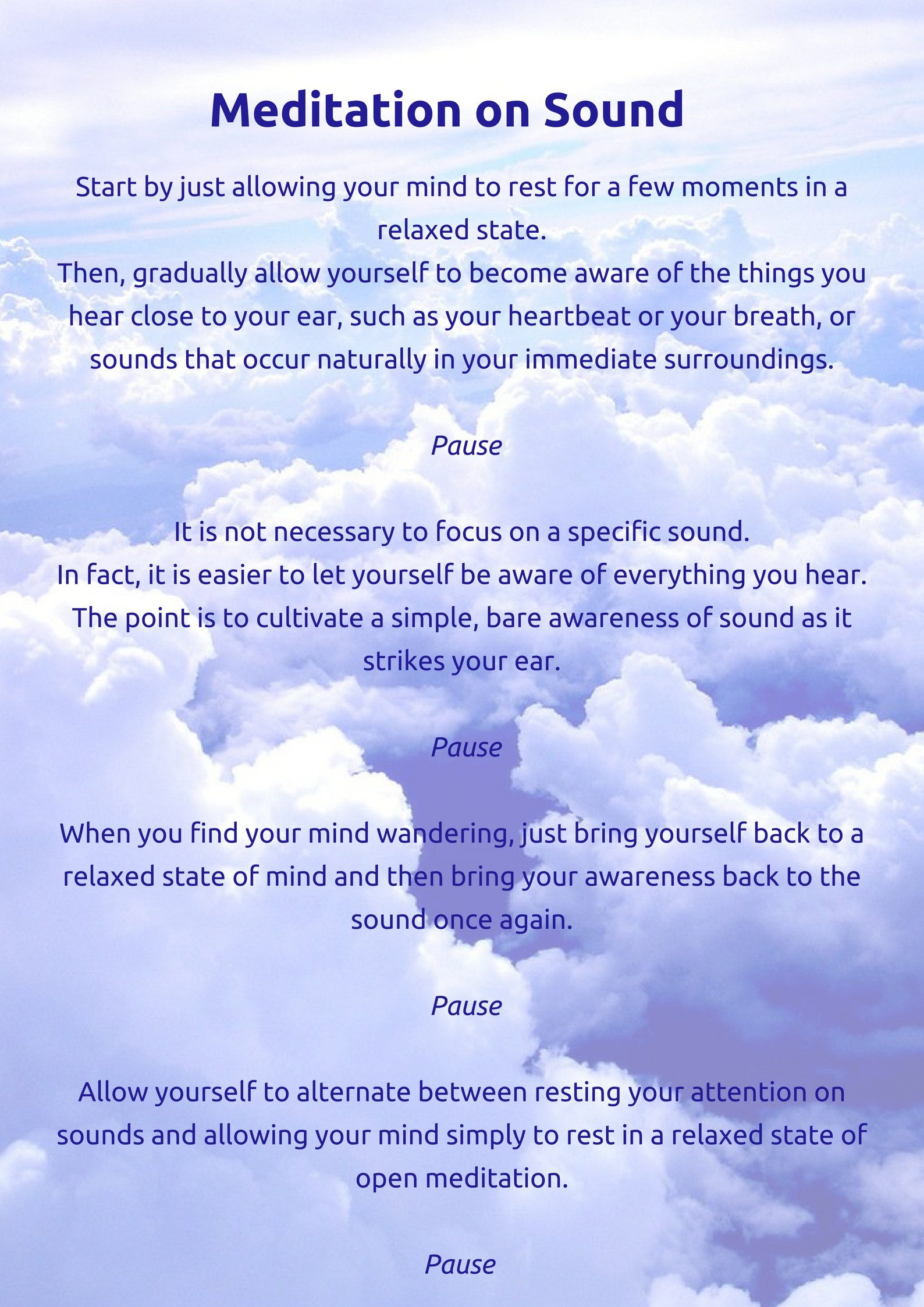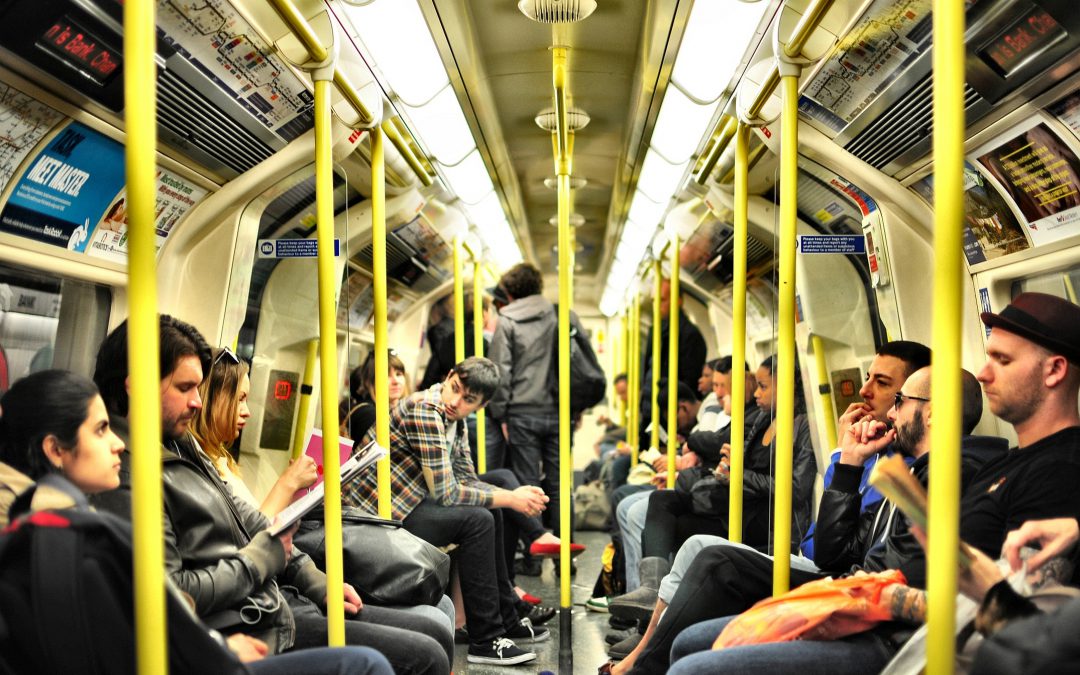
by Maureen Cooper | Apr 12, 2019 | Guest post, Meditation, Yourself
I have been coaching Tom in meditation for a while now. Recently he had the idea to try to increase the time he meditates each day. In order to get a feel of what it means to meditate for longer periods, he designed this one-day intensive for himself. It skillfully plots a series of meditations to keep the meditator engaged, while achieving the goal for the day.
What was your purpose in doing this one-day meditation intensive?
The purpose was to consolidate my meditation practice and kickstart a greater depth and regularity in my daily practice, without committing to the schedule of a traditional retreat. I wanted to create space where meditation could be the main purpose and focus of a day rather than something squeezed into one’s timetable between myriad other daily commitments.
Did you have a goal for the day?
I aimed to do 4 hours of meditation in the day. That compares to my usual daily target of 30 minutes. Upon Maureen’s suggestion I also wanted to retain the unquantifiable quality of meditation; something of the specialness that gives it a place in religious practice. This I saw as a way to inspire better practice giving better tangible results.
Can you describe the schedule you adopted?
I started off by being pretty uninspired by the simplistic idea of a day retreat that came to mind shutting myself off from the world in a quiet place and sitting for long periods. I chose to schedule the day as a series of meditations in different places in London. Looking for places where I could sit undisturbed for up to an hour, some of the most suitable I found were London’s many churches, especially in winter when outdoor venues were ruled out.
Whilst travelling to the venues I would meditate on public transport (which unsurprisingly constitutes quite a large part of my regular daily meditation whilst commuting), or walking meditations, which is a technique Maureen and I had been working on. Once at the venues I planned different types of meditation, depending on the circumstances, for example a meditation using the ambient noises as the object (rather than seeing them as a distraction).
What worked well and what was less useful?
Meditatively using public transport, outside of rush hour, is an entirely different experience! Partly because of removing the goal-directed mindset of rushing to your destination, and partly because of the greater awareness engendered by a walking meditation, it brought a very different level of interaction with one’s environment whilst travelling.
I also found it very useful having an app called Insight Timerto record the time spent meditating and various other stats useful when reviewing the day’s efforts.
What did you learn from doing this? Did you achieve your goal?
I didn’t achieve the goal of 4 hours meditation during the day, but I did achieve my purpose of the day’s intensive meditation. I learnt however that an intensive day’s meditation is not an aim in itself but a way to build on and progress towards the benefits of a regular daily meditation habit.
Would you do it again?
Yes, without hesitation.

Tom Price is Head of Tea for JING Tea, a London-based premium tea company, which Maureen has been working with over several years on transforming stress at work and one-to-one meditation guidance.
Here are some guidelines for a meditation on sound, as Tom mentioned.


by Maureen Cooper | Mar 20, 2019 | City Living, Compassion, Mindfulness, Relationships, Work
How do you use your commute time?
Do you cycle to work, or drive in your car? Maybe you take a tram, or bus? Perhaps you use the metro or ride a train. Whichever way you make the journey, your commute is a solid chunk of time twice a day, every working day. You’re not at home but you’re not in work either. The time is your own but not really. You’re free to be as you wish but within strict parameters. On the way in to work, the tasks of the day are already pressing for your attention. On the way home, anticipating a pleasant evening competes with processing what has gone on during the day.
Maybe we choose to use the time travelling to fend off the thought of the working day ahead by catching up on some good reading. Perhaps we shut ourselves off from the crowd by turning up the volume on our headphones. I hear of an increasing number of people who watch Netflix during their journeys. Alternatively, we could use this time to steal a march on our working day by scanning through our emails on our phone, or tablet and running through the schedule for the day.
Taking a fresh look at your commute
Here’s another idea—to take charge of this time by yourself and use it for your wellbeing.
In research carried out in 2010 at Harvard University it was found that people spend almost 50% of their time thinking about something different to what they are doing and that it undermines their happiness. One of the most common times when people were ruminating in this way was on their commute.
So how do we take a fresh look at our commute?
A lot of the people that I work with, who are interested in making meditation part of their lives, find it difficult to make the time they need for meditation. Quite a few are experimenting with using their commute as a time to do a meditation session. Some use a meditation app and listen to a guided meditation. Others simply wait to find a seat, and then sit quietly and focus on their breath.
Here is a very simple way to do this.
Try being mindful and come home to yourself
- Take a few moments to check in with your breathing—pay attention to the sensation of your breath entering and leaving your body
- Notice how your body is feeling—do you have any places that feel tired, or weary, or are you feeling fresh and up for anything?
- Check in on your mood—are you feeling good about the day ahead, or is there something worrying you?
- Try to become aware of the thoughts passing through your mind—notice how quickly they change and turn into other thoughts
- Just register all this—try not to get drawn into feelings of liking, or not liking any of it.
What does this accomplish?
When we connect with ourselves in this way we are tuning into the present moment and getting in touch with how things are for us. We try to do this without judgement, without wanting to change anything—just with the aim of coming home to ourselves and settling our minds.
This will help us to move into our work situation in a more relaxed and stable mood ready for whatever comes our way. On the way home, it helps us to shake off the concerns of the day and get ready to spend an evening with our friends and family.
Consider other people as just like you
So much of the stresses and strains of the day come about during our interactions with other people. Often, we focus on the things that separate us from others, when in fact, there is a great deal that we all have in common.
If you still have time on your journey, try to turn your attention to your fellow passengers.
- Notice who your neighbours are—take a few moments to scan the compartment, tram or bus and to see as many of the other passengers as you can.
- Take note of the thoughts and emotions that pass through your mind as you do this:
—notice if you make a comment in your mind about someone
—notice the people you feel drawn towards and the ones you do not like the look of
- Try to imagine how they might see you as you sit, or stand alongside them
- Take a moment to be aware that everyone travelling with you wants their day to go well and to avoid any unpleasantness
—just as you do
- Then realize that inevitably for some people things will go wrong during the day
—let that feeling touch you and help you to feel a common humanity with your fellow travellers.
What does this accomplish?
Reflecting in this way reminds us that everyone wishes for a happy life and wants to avoid pain and suffering but that pain and suffering are an inevitable part of life. Coping with all this gives a common thread to all our experiences. It enables us to see that however different our interests are, we are all in the same boat. This can help us to develop a feeling of equanimity towards others as we engage in our working day.
It’s up to us
Of course, sometimes we just want to read, or listen to music and that’s completely fine but we do have the option to take a fresh look at our commute. We can prioritise self-care and use this limbo-time in our day to develop our mindfulness—both of ourselves and of others. Spending a bit of time each day in this way will help us to deal with our work from a less stressful perspective. It will also help us to actually relax and enjoy our time when is over for the day.
Do drop a comment in the comment section and let me know if you have tried meditating during your commute and how you got on with it.
If you found this post useful you might like to check out our free 5-day e-course
HOW TO MAKE YOUR COMMUTE BENEFIT YOUR WORKING DAY





